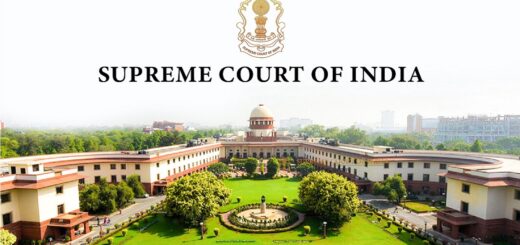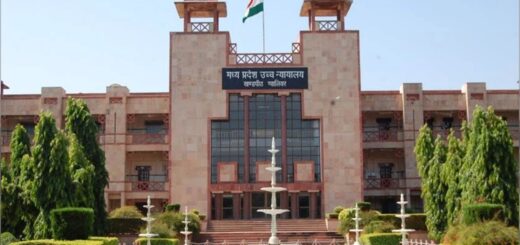The Supreme Court has ruled that tower and pre-fabricated buildings are considered goods and not fixed property. They qualify as ‘inputs’ under Rule 2(K) of the CENVAT Rules.

The Supreme Court decided that towers and pre-fabricated buildings (PFBs) are considered goods, not immovable property, and qualify as ‘inputs’ under Rule 2(k) of the Central Value Added Tax Credit Rules, 2004 (CENVAT Rules). This ruling came from a group of Civil Appeals filed by M/s Bharti Airtel Ltd. and others against the Bombay High Court and Delhi High Court decisions. The two-Judge Bench, consisting of Justice B.V. Nagarathna and Justice N. Kotiswar Singh, stated, “Since the tower and PFBs are classified as ‘goods’ and are used for mobile telecommunication services, they qualify as ‘inputs’ under Rule 2(k) for credit benefits under the CENVAT Rules.”
The main question in these Appeals was whether mobile service providers (MSPs) who pay excise duties for setting up their businesses, especially for mobile towers and PFBs, can benefit from CENVAT Rules to offset service tax on their output services. The two High Courts had differing opinions on this matter. The Bombay High Court ruled against the MSPs, siding with the Revenue, stating that MSPs cannot claim CENVAT credit for mobile towers and PFBs. In contrast, the Delhi High Court allowed MSPs to claim this credit.
Both High Court decisions were contested in the Supreme Court by the affected parties. The Bombay High Court’s lead judgment, which was challenged, stated that mobile towers and related components do not meet the definition of “capital goods” under Rule 2(a)(A) of the CENVAT Rules, nor are they considered “inputs” under Rule 2(k), meaning MSPs are not eligible for CENVAT credit on duties.
The Supreme Court observed that just because some items are attached to the ground, it does not automatically classify them as immovable properties. If the attachment is not meant to be permanent and is only for supporting the items to enhance their function, and if these items can be taken apart without causing damage or altering their nature, and can be moved and sold, then they should not be considered immovable.
The Court outlined these principles to identify the type of property:
- Nature of attachment: This checks how securely a property is connected to the ground. If it is so attached that removing it would cause damage, it is likely immovable.
- Purpose of attachment: If the attachment is meant for the long-term benefit of the land, the property is considered immovable. If it is only to help use the item itself, it is treated as movable, even if it is attached to something immovable.
- Intent of the parties: The intention behind the attachment, whether clear or implied, can determine the property type. If the parties intend for the property to be a permanent addition, it is seen as immovable. If not intended to be permanent, it is considered movable.
- Functionality Test: If an item is fixed to the ground to improve its stability and performance, this suggests the attachment benefits the item, making it movable.
- Permanency Test: If the property can be taken apart and moved without damage, the attachment is temporary, indicating it is movable.
- Marketability Test: If the property can be removed and sold, even if attached to the ground or an immovable property, it is classified as movable.
The Court explained that “input” in the context of producing a final product includes not only those items that are directly used but also those that are used indirectly, whether they are part of the final product or not. It noted that while the definition of “input” related to providing output service is not as detailed, it simply states it is “used for providing any output service.” The Court clarified that even if the definition of ‘input’ for output service is not as broad as for the final product under Rule 2(k)(i), it should not be interpreted narrowly as the CESTAT did by claiming that a tower is not directly used for signal transmission.
The Court stated that since the topic is the same—what qualifies as “input”—even though it leads to two different products, one being a physical item and the other an intangible service, using similar criteria to define “input” is acceptable. It also explained that while an antenna can theoretically function without a tower, in reality, this is not practical. The tower is crucial for positioning the antenna correctly to ensure stable signal reception and transmission, allowing for broader signal coverage. The relationship between the antenna and the tower is essential for effective mobile telecommunication services, and their connection is not distant but rather very close and necessary for the antenna’s proper operation.
The Court emphasized that there is a strong link between how they work together and the final transmission of radio signals, which is the service provided by mobile service providers. Therefore, the CESTAT’s view, which the Bombay High Court did not change, is not something we can accept. As a result, the Apex Court resolved the Appeals, supported the Delhi High Court’s decision, and overturned the Bombay High Court’s ruling.
Cause Title: M/s Bharti Airtel Ltd. v. The Commissioner of Central Excise, Pune (Neutral Citation: 2024 INSC 880)








